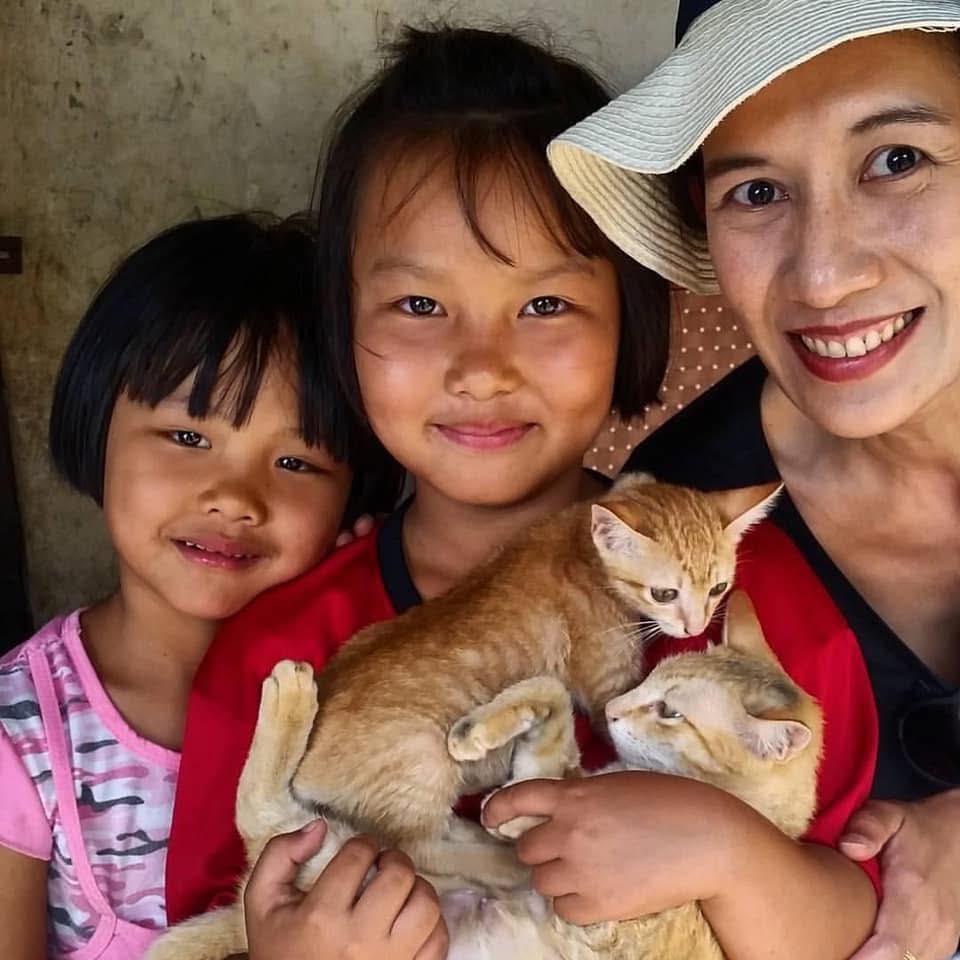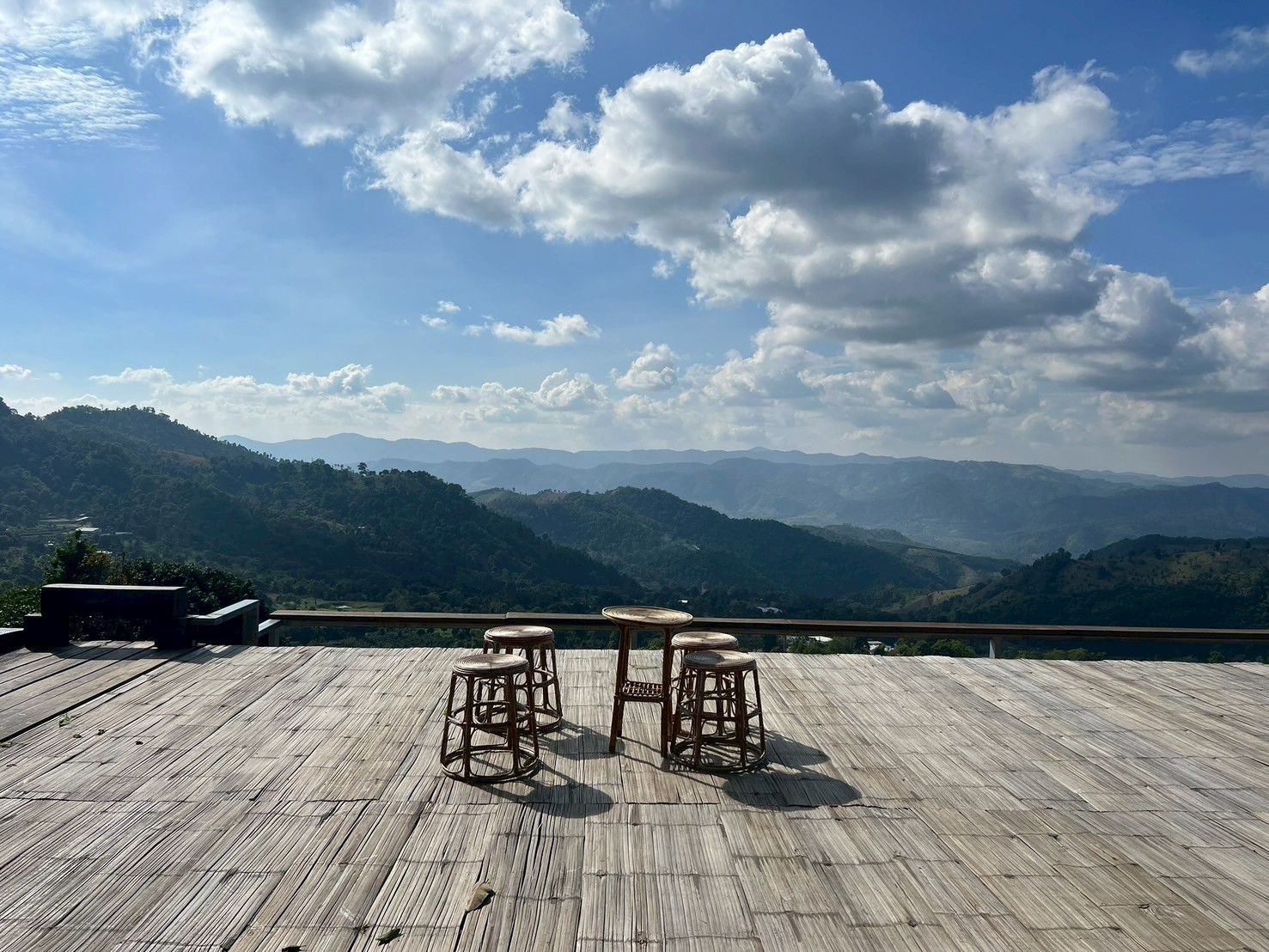
Chiang Rai, Thailand’s northernmost province, remained largely off the radar for many international travellers—until June 23, 2018. That was the day the global spotlight turned to the dramatic rescue of a young football team and their coach trapped in a flooded cave. (I still remember how Australian media included maps of Thailand just to show viewers where Chiang Rai is!)
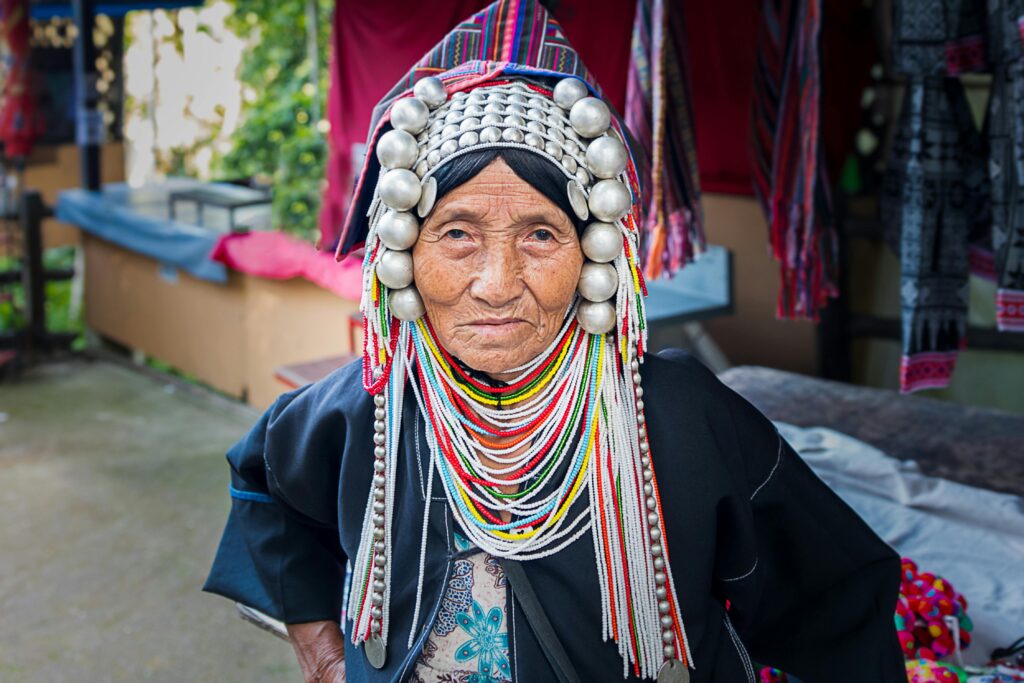
But for those interested in history, Chiang Rai has long held great cultural and historical significance. Once the heart of a powerful kingdom, the region today offers a fascinating blend of natural beauty, ancient traditions, remote hill tribes, and unique cultural treasures.
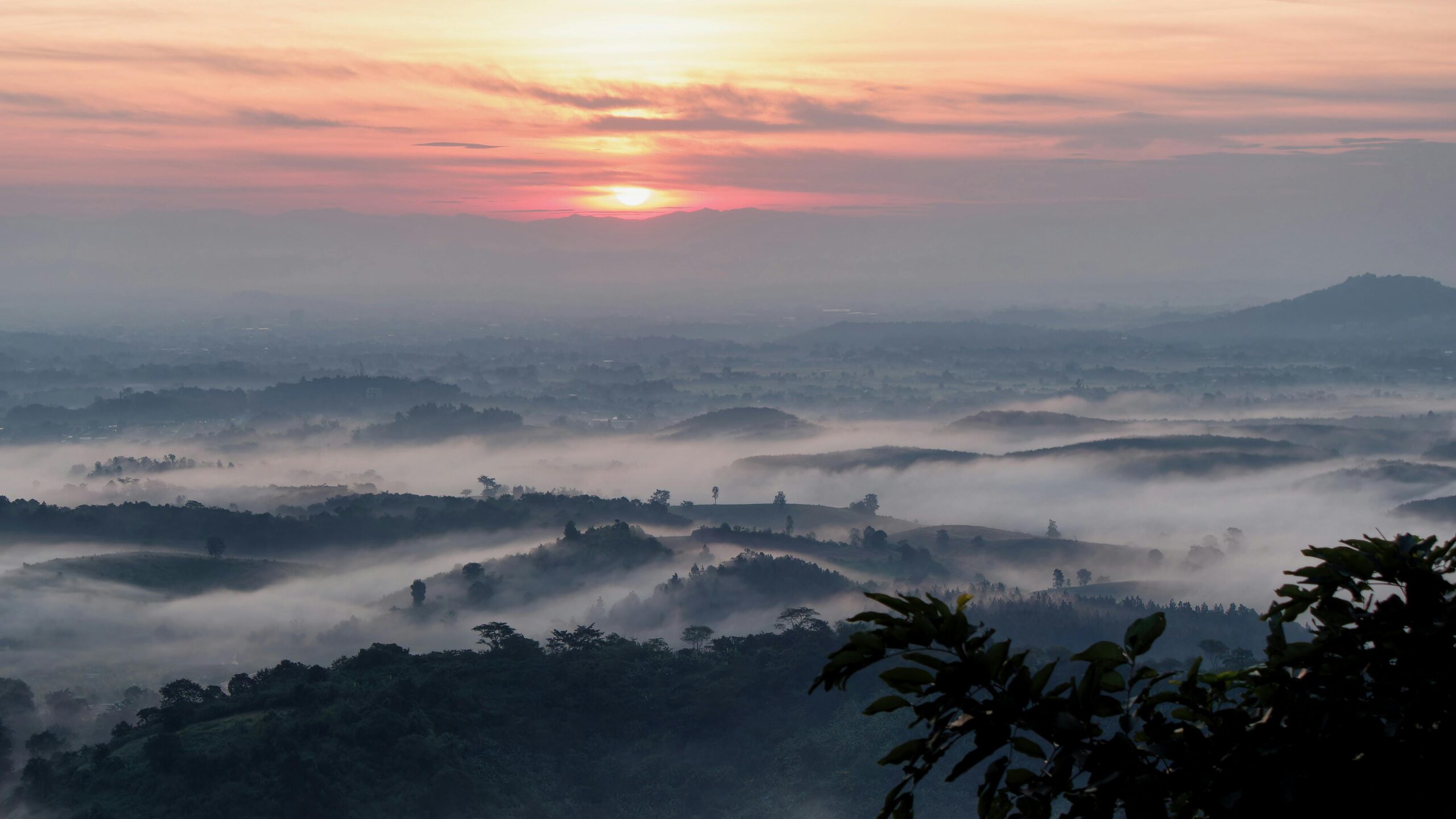
Surrounded by mountains, Chiang Rai is ideal for jungle trekking, mountain biking, and slow travel. Some areas are perfect for adventurous exploration, while others are better suited to leisurely cycling or relaxed sightseeing. While many travellers visit Chiang Rai as a day trip from Chiang Mai, the region truly deserves more time. Spend a few nights here to fully appreciate its heritage, natural landscapes, and mindful experiences.
I first visited Chiang Rai as a child, accompanying my mum to an international conference. We stayed in the Golden Triangle area, and even then, the serene atmosphere left an impression on me. My second visit was with Absolutely Fantastic Holidays, when I brought an Australian film crew to capture the beauty of the White Temple, Doi Tung, and the Golden Triangle. The third time, I travelled with Siamrise in August 2018—just a month after the cave rescue—to escort another Australian crew filming in the area. We stayed two nights by the river near town, filming the White Temple and Choui Fong Tea Plantation before heading north and spend another two nights to cover the Elephant Camp at Anantara Golden Triangle and the surrounding attractions in the Golden Triangle and Chiang Saen.
Over the years, I’ve also created itineraries for several travel writers and bloggers to explore this special region. It’s one of my favourite parts of Thailand, and I thought it was time to share it with you too.
Chiang Rai Town Centre
Chiang Rai town itself is small and laid-back. Most visitors come not for the town, but for what lies beyond—rugged hills, serene valleys, and extraordinary landmarks like the White Temple, the Blue Temple, and the Black House.
Wat Rong Khun (The White Temple)
This iconic temple was created and is privately owned by the renowned Thai artist Chalermchai Kositpipat. A striking fusion of traditional Buddhist symbolism and modern art, it’s unlike any temple you’ve seen before. Spend time browsing the murals inside the main hall and you’ll spot playful details the artist has subtly included. If you’re lucky, you might even see the artist himself walking around the grounds.
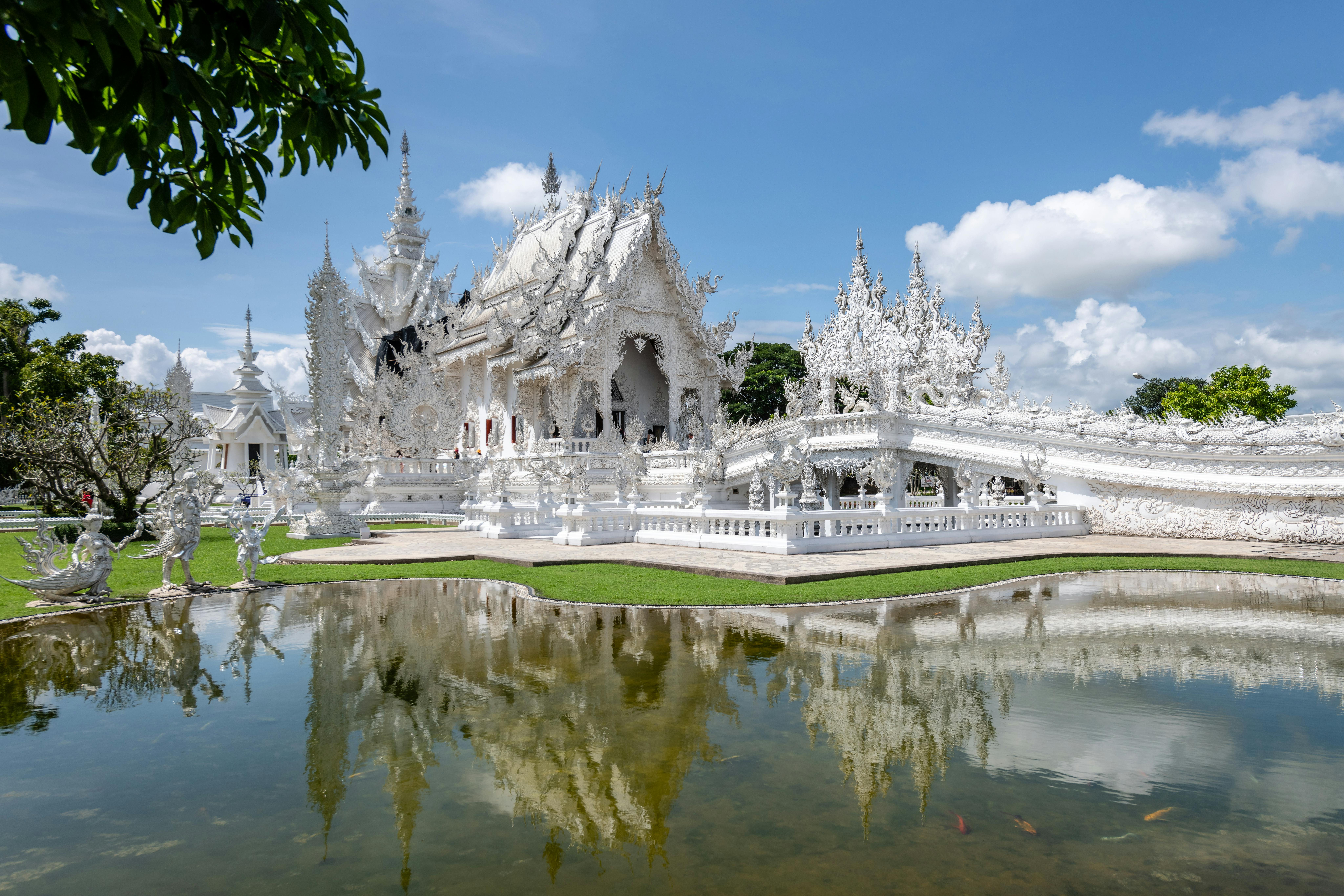
Wat Rong Suea Ten (Blue Temple)
Famous for its vivid blue hues and intricate design, this newer temple offers a peaceful, almost dreamlike setting—perfect for quiet reflection.

Baan Dam Museum (Black House)
A thought-provoking collection of dark, dramatic buildings by Thai artist Thawan Duchanee. The art here delves into themes of life and death in raw, honest, and visually arresting ways.
Into the Mountains
Doi Tung Development Project
Initiated by Princess Srinagarindra (mother of the late King Bhumibol), this royal project is a model of sustainable development. Visit to learn how education, reforestation, and fair trade transformed local hill tribe communities—and browse beautiful handmade crafts.
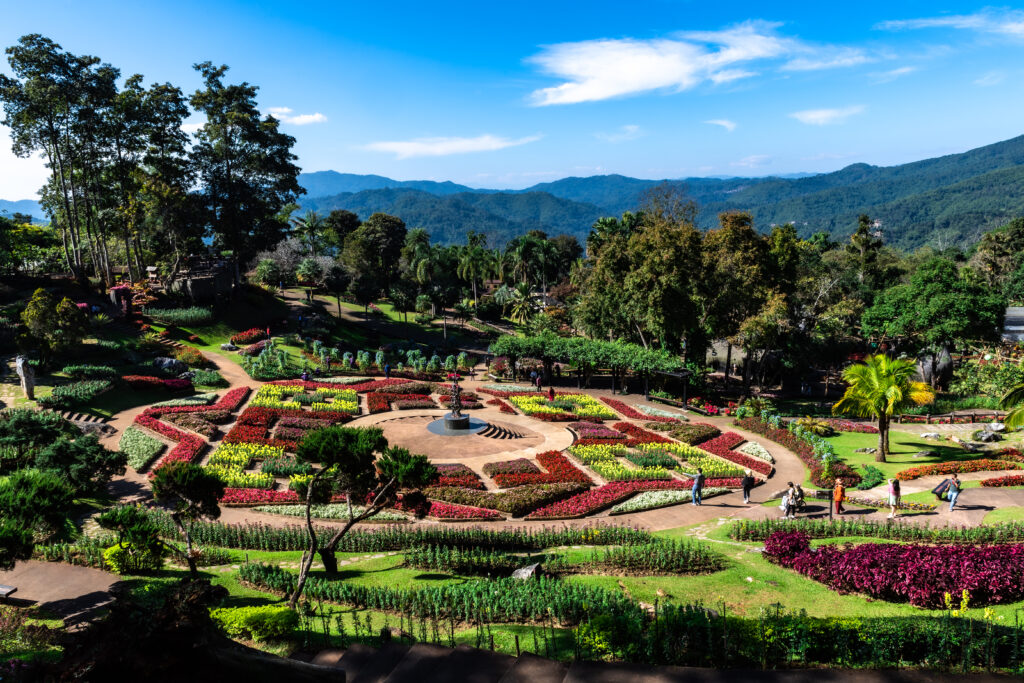
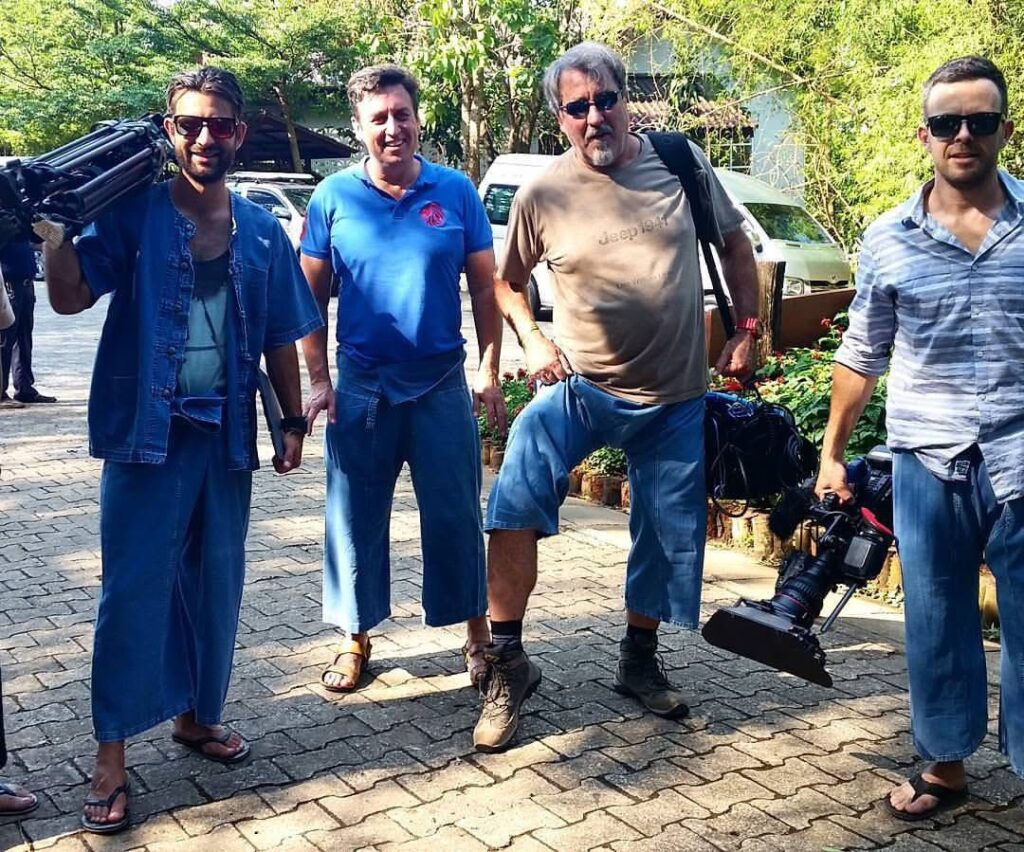
Choui Fong Tea Plantation
Sip tea with a view! This scenic plantation offers insight into sustainable tea farming, along with a café that overlooks rolling green hills.
Singha Park
A family-friendly eco-park that promotes outdoor recreation with cycling, zip-lining, and farm experiences. It’s a lovely place to reconnect with nature and have some fun.
Tham Luang Nang Non Cave
Once a quiet local cave, now globally known for the 2018 rescue mission. This cave system in Mae Sai District, is situated under the Doi Nang Non mountain range which forms part of the border between Thailand and Myanmar. The cave extends for approximately 10 KM. Today, it’s open for guided tours that focus on safety, education, and conservation.

Doi Mae Salong
A picturesque hilltop village founded by Yunnan – Chinese immigrants, now famous for its tea plantations and cultural diversity. A wonderful spot to engage with local communities and learn about their heritage. In cool season, the hills are covered in pink and white cherry blossoms.
Doi Chang
Doi Chang is a gem for those seeking nature and serenity. Famous for its coffee plantations, the area offers scenic hikes through lush, mist-covered mountains and viewpoints overlooking valleys and coffee fields. Nature lovers can trek to Doi Chang’s summit for panoramic views. The cooler climate and unique hill tribe cultures make it a great spot for eco-tourism and cultural immersion. Doi Chang is also a peaceful escape for birdwatching and exploring the dense forests that are rich in biodiversity.
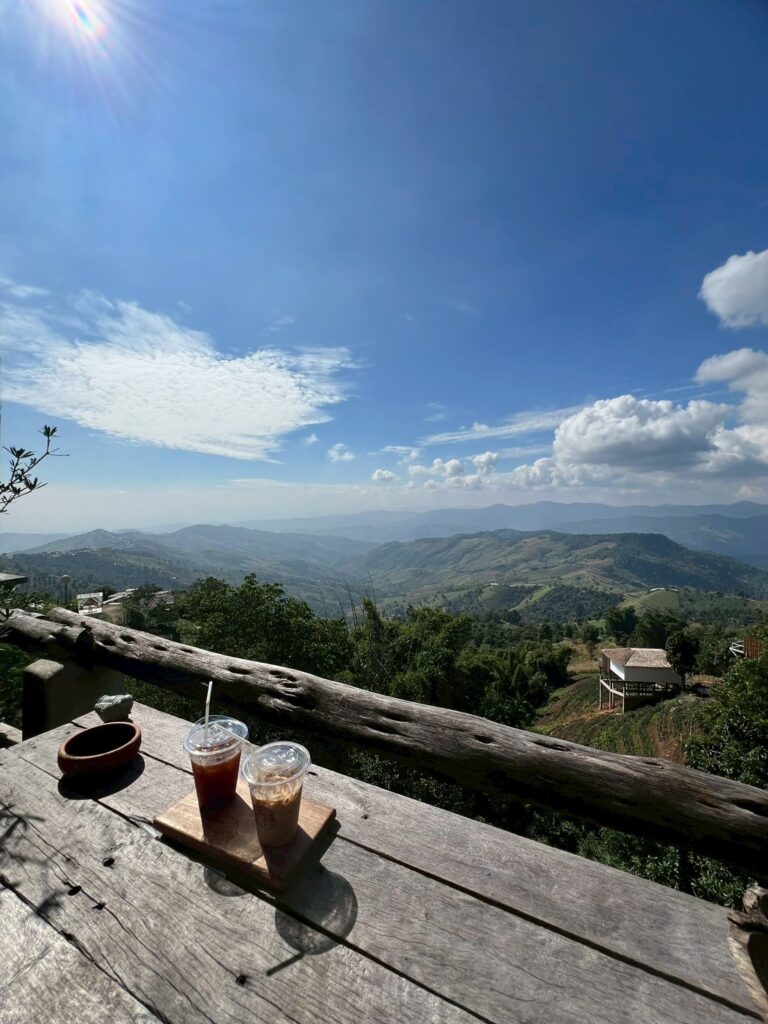
Phu Chi Fa
One of the most stunning viewpoints in northern Thailand with sea-of-mist sunrises. Get up before dawn and aim to summit in time for the stunning sunrise. The hike is about 2 km, depending on your fitness level, you can make it to the top in 20 to 40 minutes. Combine with nearby villages for a more immersive trek.
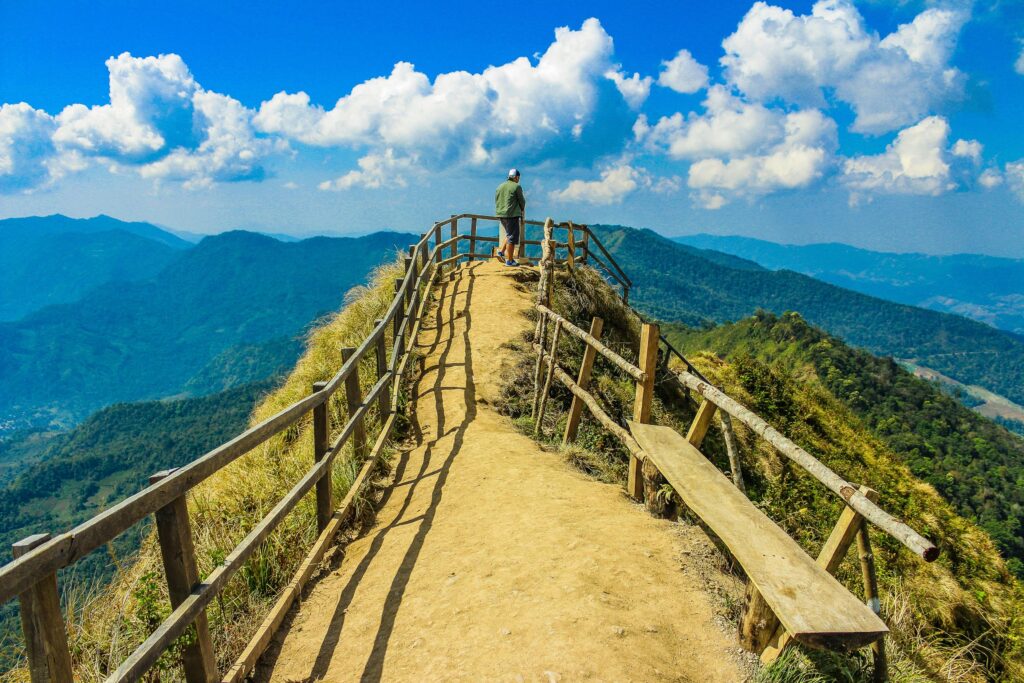
From Phu Chi Fah to Phu Chi Dao
For something more challenging, take an extension from Phu Chi Fah to Phu Chi Dao. The hike is approximately 12 kilometers along the mountain ridge, skirting the Thai-Laotian border further northwards and upwards to about 2 km – it’s certainly more challenging, but incredibly rewarding. The view is even more tranquil and breathtaking.
The Golden Triangle
Once notorious for opium production, the Golden Triangle—where Thailand, Laos, and Myanmar converge—has been transformed by royal initiatives into a region of peace, sustainability, and cultural exchange.
Golden Triangle Viewpoint
Take in a bird’s-eye view of three countries at once—ideal for photos and fresh perspective.
Golden Buddha at Sop Ruak
A striking riverside Buddha statue surrounded by shrines and peaceful gardens.
Mekong River Boat Trips
Take a short scenic cruise to see life along the river and better understand the geography of the region. (Note: Bring your passport if you plan to cross into Laos during the boat tour.)
Hall of Opium Museum
A world-class museum offering a powerful, in-depth look at the opium trade and how the region overcame it. It’s one of the most moving and educational experiences in northern Thailand.
The Golden Triangle Asian Elephant Foundation
Just 4 km from the Golden Triangle, the Golden Triangle Asian Elephant Foundation is home to around 20 rescued elephants living in a peaceful, natural setting. Located within the grounds of Anantara Golden Triangle, the foundation is open to outside visitors who book in advance. All proceeds go directly to elephant care and conservation. Experiences here are ethical and educational, focusing on observation and learning rather than entertainment. Visitors may join a guided walk with the elephants, observe the mahouts caring the elephants to gain insight into their daily routines, and learn about ongoing efforts to protect these gentle giants and their habitat.


Chiang Saen
Just a short drive from the Golden Triangle lies Chiang Saen, a quiet riverside town steeped in history. Once a thriving Lanna kingdom city (even before Chiang Mai), it offers a tranquil, off-the-beaten-path experience.
Chiang Saen Historical Park
Explore the remnants of 13th-century city walls, moats, and centuries-old temples. Rent a bike and ride through time—it’s often blissfully uncrowded. Don’t miss Wat Pa Sak and Wat Phra That Chedi Luang.
Wat Pa Sak, meaning “the temple of the teak forest,” features a stupa surrounded by tall teak trees.
Wat Chedi Luang is home to a 55-metre-tall stupa—one of the oldest and most important temples in Chiang Rai.
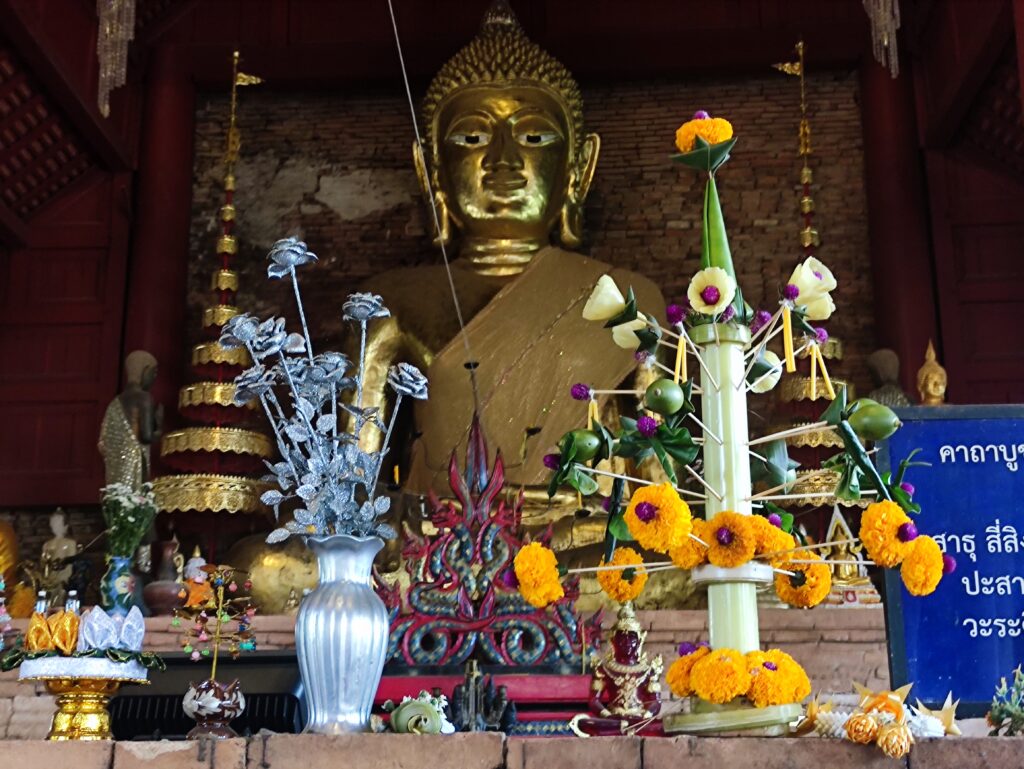
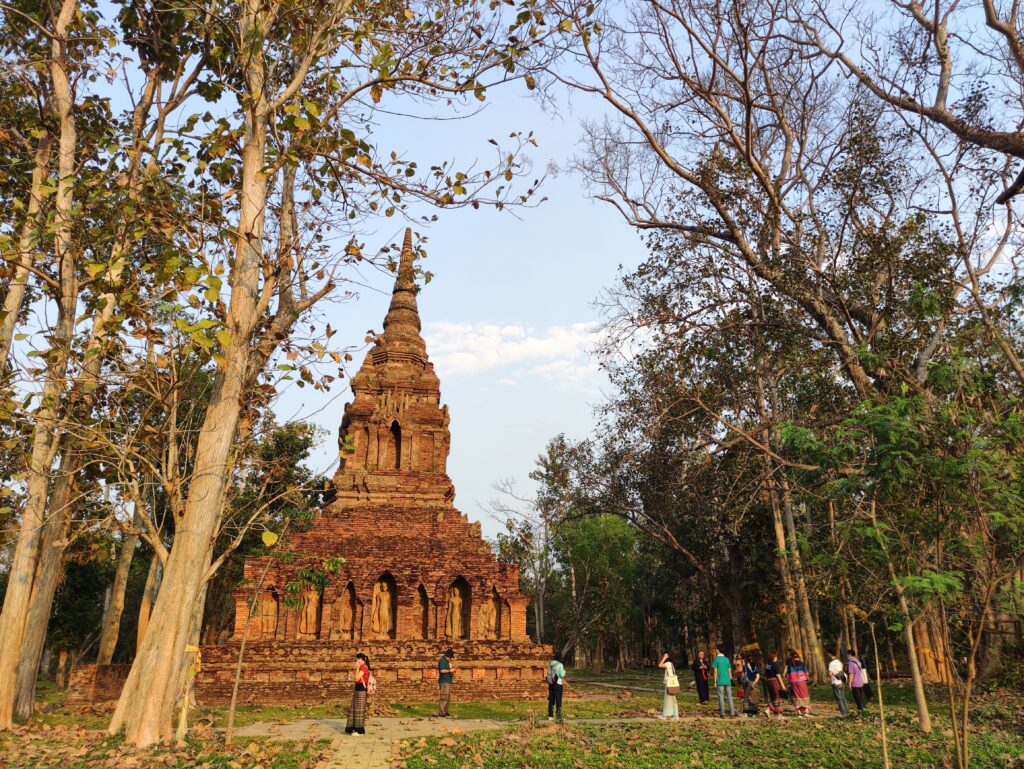
If you have time and want to dive deeper into local history, visit the Chiang Saen National Museum next to Wat Phra That Chedi Luang. This small but informative museum showcases archaeological artefacts and historical art from the region.
Mekong River Walk
A scenic riverside path perfect for a peaceful stroll or mindful cycling, with Laos just across the river. For the best views, head up to Wat Phra That Pha Ngao, a small temple perched on a hilltop.
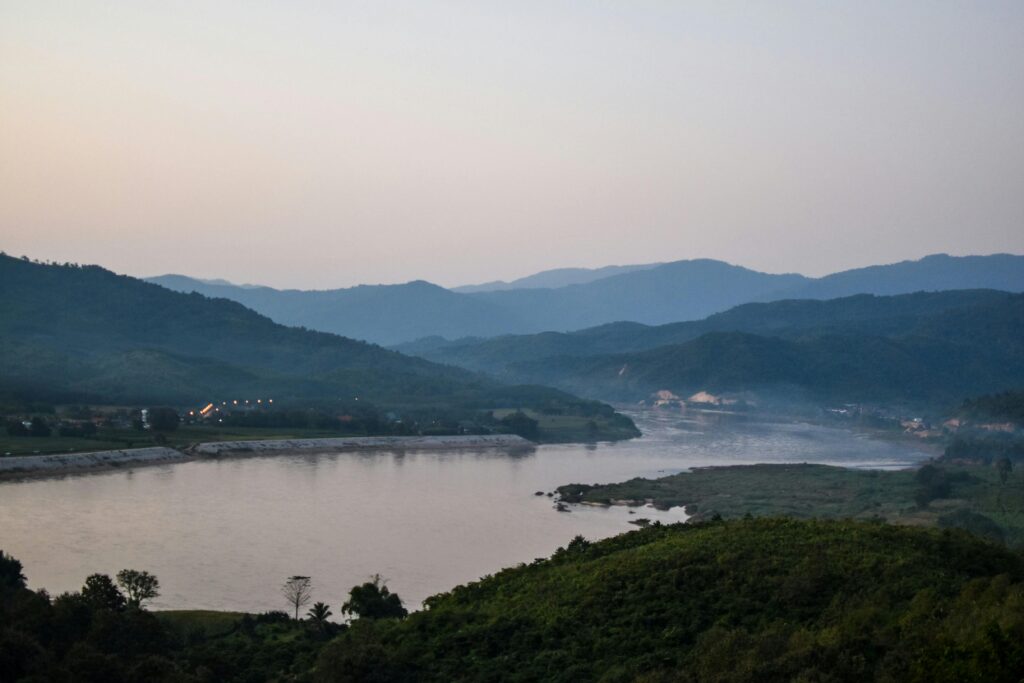
Chiang Rai invites you to go deeper. Beyond its temples and landscapes, it’s a place of transformation—where ancient kingdoms meet modern art, and where sustainable travel meets spiritual reflection.
